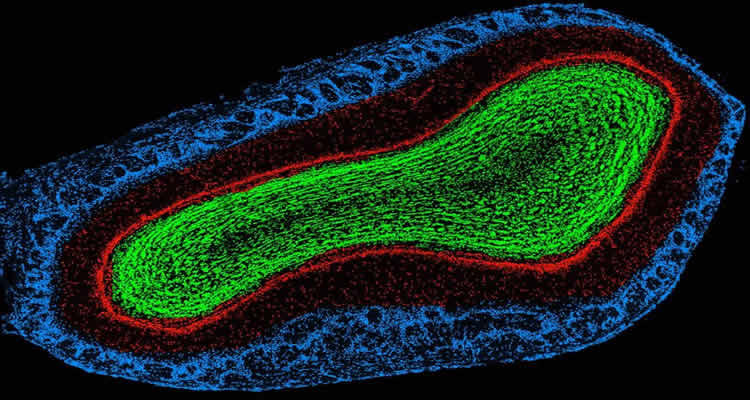A group of physiologists led by University of Kentucky’s Tim McClintock have identified the receptors activated by two odors using a new method that tracks responses to smells in live mice.
Their research was published in the latest edition of The Journal of Neuroscience.
Using a fluorescent protein to mark nerve cells activated by odors, McClintock and his colleagues identified receptors that allow mouse nerve cells to respond to two odors: eugenol, which is a component of several spices, most notably cloves, and muscone, known as musk.
“This new method could help us understand how these receptors allow mice, and eventually humans, to detect and discriminate odors, similar to the way in which the three receptors in the retinas of our eyes allow us to discriminate colors,” McClintock said. “But unlike vision and hearing, the details of how the odor receptors discriminate odors, much like color in vision or pitch in sound, are unknown.”
“Before we have a medical application in mind, we must first create a roadmap for these receptors.”
Scientists have been pursuing this “holy grail” of the sense of smell since Richard Axel and Linda Buck discovered these odorant receptors and their role in the organization of the olfactory system, winning them the Nobel Prize in Physiology or Medicine in 2004.
The challenge has been scientists’ ability to identify which receptors are activated by certain smells, particularly since humans have about 400 such receptors (mice have an astounding 1,100 receptors).

By using this new invention, called the Kentucky In Vivo Odorant-Ligand Receptor Assay, or in short, ‘the Kentucky Assay,’ scientists are now able to determine which receptors respond to certain odors in awake, freely behaving animals.
There are many practical applications for this knowledge, according to McClintock.
“Knowing which receptors respond to a chemical would help us devise better flavors and fragrances,” he said. “But perhaps more tantalizing is the idea that we could potentially design receptor blockers for offensive odors.
Other lead co-authors on the study are Hiro Matsunami from Duke University, Durham, N.C.; and Peter Mombaerts, from the Max Planck Research Unit for Neurogenetics, Frankfurt, Germany.
Contact: Laura Dawahare – University of Kentucky
Source: University of Kentucky press release
Image Source: The image is credited to Matt Valley, who has released this image into the public domain
Original Research: Abstract for “In Vivo Identification of Eugenol-Responsive and Muscone-Responsive Mouse Odorant Receptors” by Timothy S. McClintock, Kaylin Adipietro, William B. Titlow, Patrick Breheny, Andreas Walz, Peter Mombaerts, and Hiroaki Matsunami in Journal of Neuroscience. Published online November 19 2014 doi:10.1523/JNEUROSCI.3625-14.2014






